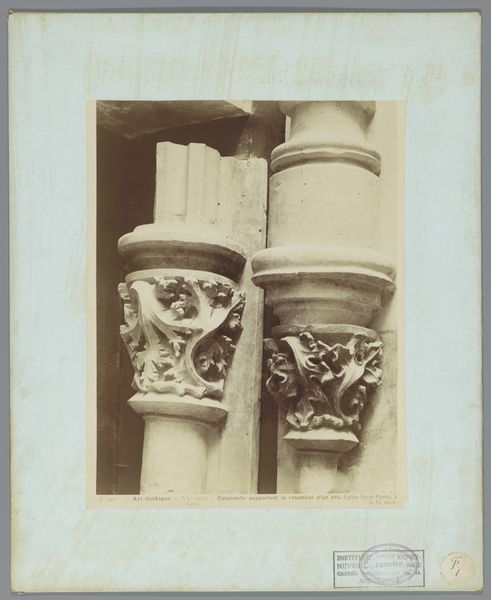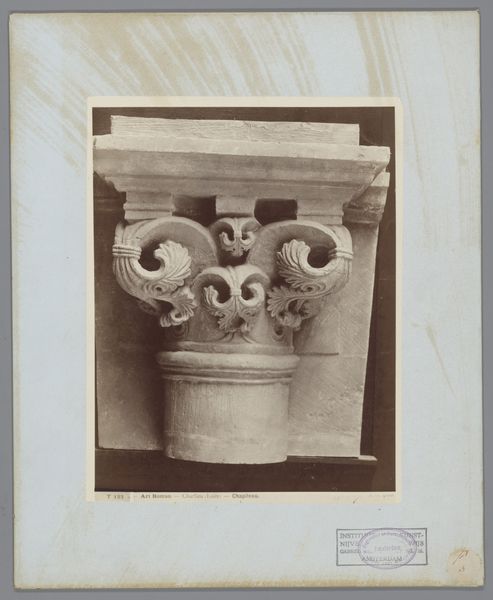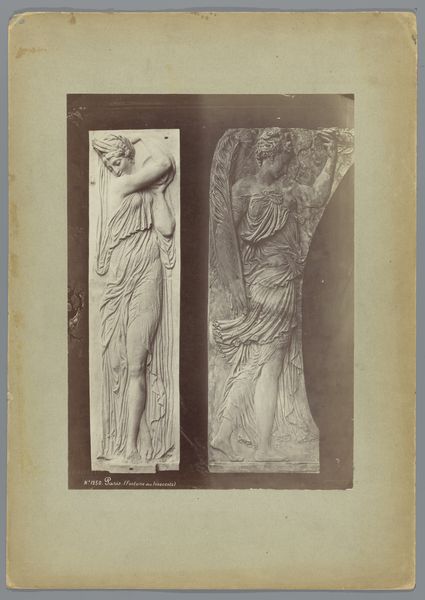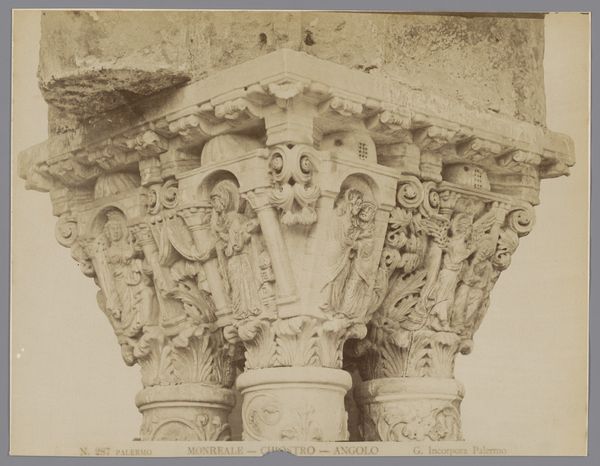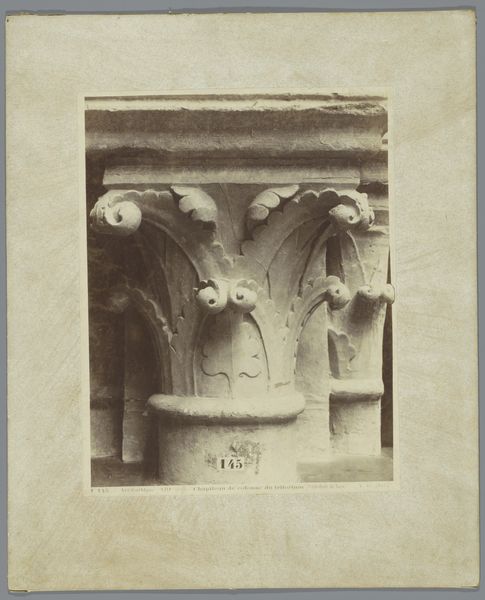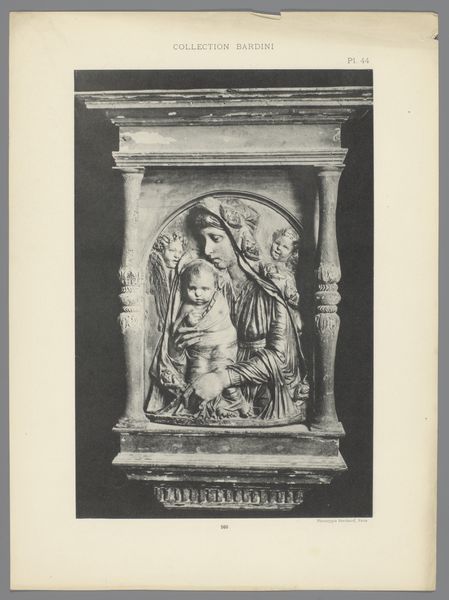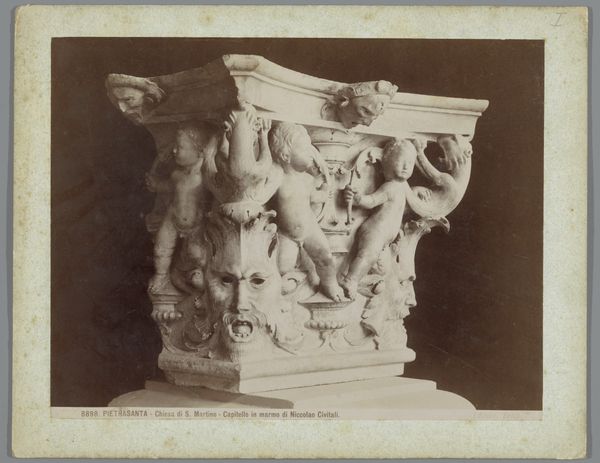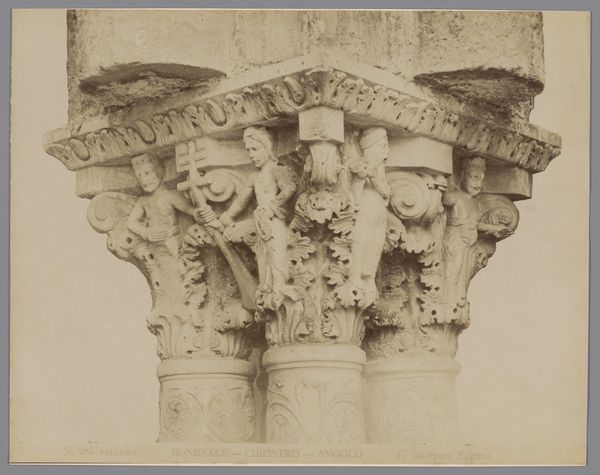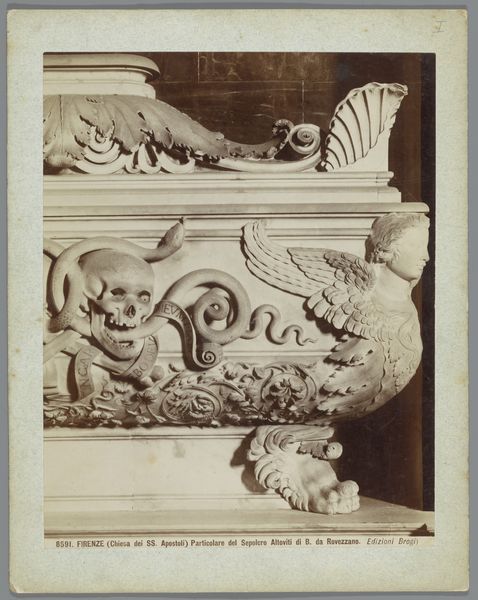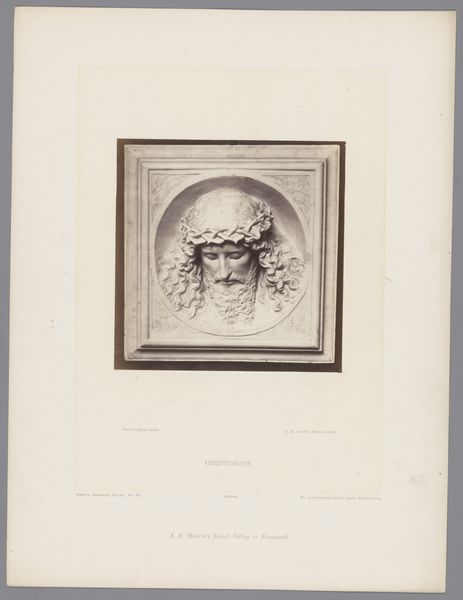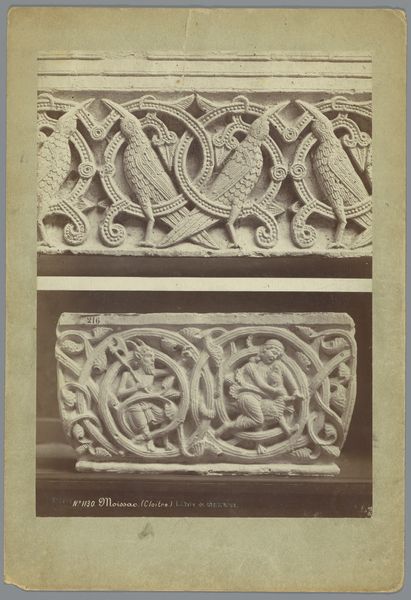
Pompeii_ Leftovers of Capitals in the Temple of Mercury, No. 5030 c. 1880 - 1890
0:00
0:00
albumen-print, paper, photography, sculpture, albumen-print, architecture
#
albumen-print
#
greek-and-roman-art
#
landscape
#
paper
#
photography
#
ancient-mediterranean
#
sculpture
#
history-painting
#
albumen-print
#
architecture
#
realism
Copyright: Public Domain
Curator: What a poignant image. This is Giacomo Brogi’s albumen print, "Pompeii, Leftovers of Capitals in the Temple of Mercury," dating from about 1880 to 1890. Editor: There's an overwhelming feeling of loss and decay. The somber sepia tones emphasize the ruin and neglect of this carved architectural fragment. Curator: Precisely. Brogi captured a section of a column capital from the Temple of Mercury, documenting the ruins unearthed at Pompeii. The medium itself, the albumen print, a process heavily reliant on meticulous preparation and material interaction, mirrors the archaeological labor invested in revealing this history. Editor: Absolutely. And consider what this image signifies beyond its aesthetic qualities. It’s not merely a depiction of architectural remains but also a record of colonialism and the gaze of the European Grand Tour. The act of photographing these ruins reifies a particular historical narrative, centering European intellectual interest. Curator: The texture is remarkable. You can practically feel the rough, weathered stone. The contrast between the finely carved details—the winged figure, the floral motifs—and the fractured surfaces speaks volumes about the relentless forces of nature and time. The physical transformation is as much the subject as the carving itself. Editor: I am interested in the social implications. The Temple of Mercury, dedicated to commerce and communication, was a vital hub in Pompeii. Photographing its ruins is about the shattering of a vibrant societal structure, memorializing a traumatic event, and subsequently re-framing its legacy to a viewing audience removed by time. Curator: The image functions as both artifact and documentation. Brogi wasn’t just creating art; he was preserving, through chemical and mechanical means, a tangible link to a lost civilization, presenting it for study and admiration. Editor: Yes, but who is the "we" intended to benefit from it, and at what cost? Images like this were distributed widely, feeding an insatiable appetite for the exotic and historical but also cementing power dynamics rooted in cultural heritage and access. Curator: Brogi's image offers more than meets the eye. It encourages us to contemplate the enduring quality and fragility of human accomplishment and the power of photography in preserving, documenting, and interpreting our collective heritage. Editor: It's more than just remnants of carved stone. The albumen print holds encoded information relating to the sociopolitical implications of this form of image distribution and what it signified historically for both contemporary viewers and, indeed, our modern understanding of cultural representation.
Comments
No comments
Be the first to comment and join the conversation on the ultimate creative platform.
